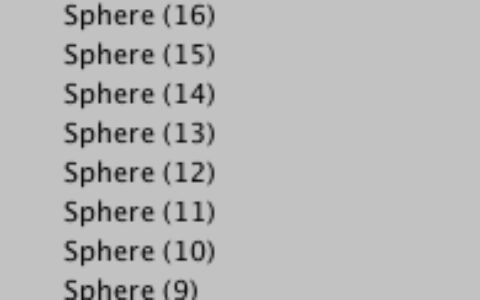解决Tensorflow sess.run导致的内存溢出问题
在使用Tensorflow进行模型训练时,有时会遇到sess.run导致的内存溢出问题。这个问题通常是由于在sess.run中同时运行多个操作,导致内存占用过高而引起的。本文将详细讲解如何解决Tensorflow sess.run导致的内存溢出问题,并提供两个示例说明。
示例1:使用feed_dict解决内存溢出问题
以下是使用feed_dict解决内存溢出问题的示例代码:
import tensorflow as tf
import numpy as np
# 定义模型
x = tf.placeholder(tf.float32, [None, 784])
W = tf.Variable(tf.zeros([784, 10]))
b = tf.Variable(tf.zeros([10]))
y = tf.nn.softmax(tf.matmul(x, W) + b)
# 定义损失函数和优化器
y_ = tf.placeholder(tf.float32, [None, 10])
cross_entropy = tf.reduce_mean(-tf.reduce_sum(y_ * tf.log(y), reduction_indices=[1]))
train_step = tf.train.GradientDescentOptimizer(0.5).minimize(cross_entropy)
# 导入数据
from tensorflow.examples.tutorials.mnist import input_data
mnist = input_data.read_data_sets("MNIST_data/", one_hot=True)
# 训练模型
with tf.Session() as sess:
sess.run(tf.global_variables_initializer())
for i in range(1000):
batch_xs, batch_ys = mnist.train.next_batch(100)
sess.run(train_step, feed_dict={x: batch_xs, y_: batch_ys})
correct_prediction = tf.equal(tf.argmax(y, 1), tf.argmax(y_, 1))
accuracy = tf.reduce_mean(tf.cast(correct_prediction, tf.float32))
print(sess.run(accuracy, feed_dict={x: mnist.test.images, y_: mnist.test.labels}))
在这个示例中,我们首先定义了模型和损失函数,并使用tf.placeholder()方法定义了输入x和标签y_。接着,我们使用input_data.read_data_sets()方法导入了MNIST数据集,并使用sess.run()方法训练模型。在训练模型时,我们使用feed_dict参数将数据传递给模型,避免了在sess.run中同时运行多个操作导致的内存溢出问题。
示例2:使用tf.data解决内存溢出问题
以下是使用tf.data解决内存溢出问题的示例代码:
import tensorflow as tf
import numpy as np
# 定义模型
x = tf.placeholder(tf.float32, [None, 784])
W = tf.Variable(tf.zeros([784, 10]))
b = tf.Variable(tf.zeros([10]))
y = tf.nn.softmax(tf.matmul(x, W) + b)
# 定义损失函数和优化器
y_ = tf.placeholder(tf.float32, [None, 10])
cross_entropy = tf.reduce_mean(-tf.reduce_sum(y_ * tf.log(y), reduction_indices=[1]))
train_step = tf.train.GradientDescentOptimizer(0.5).minimize(cross_entropy)
# 导入数据
from tensorflow.examples.tutorials.mnist import input_data
mnist = input_data.read_data_sets("MNIST_data/", one_hot=True)
# 使用tf.data构建数据集
dataset = tf.data.Dataset.from_tensor_slices((mnist.train.images, mnist.train.labels))
dataset = dataset.batch(100)
iterator = dataset.make_initializable_iterator()
next_batch = iterator.get_next()
# 训练模型
with tf.Session() as sess:
sess.run(tf.global_variables_initializer())
sess.run(iterator.initializer)
for i in range(1000):
batch_xs, batch_ys = sess.run(next_batch)
sess.run(train_step, feed_dict={x: batch_xs, y_: batch_ys})
correct_prediction = tf.equal(tf.argmax(y, 1), tf.argmax(y_, 1))
accuracy = tf.reduce_mean(tf.cast(correct_prediction, tf.float32))
print(sess.run(accuracy, feed_dict={x: mnist.test.images, y_: mnist.test.labels}))
在这个示例中,我们首先定义了模型和损失函数,并使用tf.placeholder()方法定义了输入x和标签y_。接着,我们使用input_data.read_data_sets()方法导入了MNIST数据集,并使用tf.data.Dataset.from_tensor_slices()方法构建了数据集。使用dataset.batch()方法将数据集分为大小为100的批次,并使用iterator.get_next()方法获取下一批次的数据。在训练模型时,我们使用sess.run()方法运行iterator.initializer方法初始化迭代器,并使用sess.run()方法运行next_batch获取下一批次的数据。这种方法可以避免在sess.run中同时运行多个操作导致的内存溢出问题。
结语
以上是解决Tensorflow sess.run导致的内存溢出问题的完整攻略,包含了使用feed_dict和使用tf.data两种方法的示例代码。在使用Tensorflow进行模型训练时,遇到内存溢出问题是很常见的,我们可以使用这些方法来解决这个问题。
本站文章如无特殊说明,均为本站原创,如若转载,请注明出处:解决Tensorflow sess.run导致的内存溢出问题 - Python技术站


 微信扫一扫
微信扫一扫  支付宝扫一扫
支付宝扫一扫 
![[转]tensorflow提示:No module named ''tensorflow.python.eager"](https://pythonjishu.com/wp-content/uploads/2023/04/rnDUGnHEHehX20230408-480x300.jpg)
